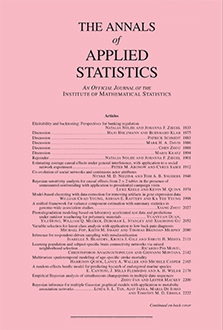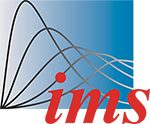Abstract
A new type of nonstationary Gaussian process model is developed for approximating computationally expensive functions. The new model is a composite of two Gaussian processes, where the first one captures the smooth global trend and the second one models local details. The new predictor also incorporates a flexible variance model, which makes it more capable of approximating surfaces with varying volatility. Compared to the commonly used stationary Gaussian process model, the new predictor is numerically more stable and can more accurately approximate complex surfaces when the experimental design is sparse. In addition, the new model can also improve the prediction intervals by quantifying the change of local variability associated with the response. Advantages of the new predictor are demonstrated using several examples.
Citation
Shan Ba. V. Roshan Joseph. "Composite Gaussian process models for emulating expensive functions." Ann. Appl. Stat. 6 (4) 1838 - 1860, December 2012. https://doi.org/10.1214/12-AOAS570
Information





